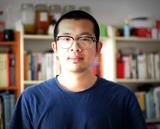您当期的位置:首页 >> 课程详情 >> 新概念四必背优秀文章八
课程介绍
新概念四必背优秀文章八
Lesson 32 Galileo reborn 伽利略的复生
In his own lifetime Galileo was the centre of violent controversy; but the scientific dust has long since settled, and today we can see even his famous clash with the Inquisition in something like its proper perspective. But, in contrast, it is only in modern times that Galileo has become a problem child for historians of science.
The old view of Galileo was delightfully uncomplicated. He was, above all, a man who experimented: who despised the prejudices and book learning of the Aristotelians, who put his questions to nature instead of to the ancients, and who drew his conclusions fearlessly. He had been the first to turn a telescope to the sky, and he had seen there evidence enough to overthrow Aristotle and Ptolemy together. He was the man who climbed the Leaning Tower of Pisa and dropped various weights from the top, who rolled balls down inclined planes, and then generalized the results of his many experiments into the famous law of free fall.
But a closer study of the evidence, supported by a deeper sense of the period, and particularly by a new consciousness of the philosophical undercurrents in the scientific revolution, has profoundly modified this view of Galileo. Today, although the old Galileo lives on in many popular writings, among historians of science a new and more sophisticated picture has emerged. At the same time our sympathy for Galileo's opponents has grown somewhat. His telescopic observations are justly immortal; they aroused great interest at the time, they had important theoretical consequences, and they provided a striking demonstration of the potentialities hidden in instruments and apparatus. But can we blame those who looked and failed to see what Galileo saw, if we remember that to use a telescope at the limit of its powers calls for long experience and intimate familiarity with one's instrument? Was the philosopher who refused to look through Galileo's telescope more culpable than those who alleged that the spiral nebulae observed with Lord Rosse's great telescope in the eighteen-forties were scratches left by the grinder? We can perhaps forgive those who said the moons of Jupiter were produced by Galileo's spyglass if we recall that in his day, as for centuries before, curved glass was the popular contrivance for producing not truth but illusion, untruth; and if a single curved glass would distort nature, how much more would a pair of them?
伽利略在世时是激烈论战的中心。但是,自他逝世以来,那场科学上的纷争早已平息了下来,甚至他和宗教法庭的著名冲突,我们今天也能正确如实地看待。但是相比之下,对于科学史家来说,伽利略只是在现代才变成一个新的难题。
令人高兴的是,过去对伽利略的看法并不复杂。他首先是个实验工作者,他蔑视亚里士多德学派的偏见和空洞的书本知识。他向自然界而不是向古人提出问题,并大胆地得出自己的结论。他是第一个把望远镜对准天空的人,观察到的论据足以把亚里士多德和托勒密一起推翻。他就是那个曾经爬上比萨斜塔,从塔顶向下抛掷各种重物的人;他就是那个使球体沿斜面向下滚动,然后将多次实验结果概括成著名的自由落体定律的人。
但是,对那个时代的深化了解,尤其是以科学革命中哲学潜流的新意识为依据,进一步仔细研究,就会极大地改变对伽利略的看法。今天,虽然已故的伽利略继续活在许多通俗读物中,但在科学史家中间,一个新的更加复杂的伽利略的形象出现了。与此同时,我们对伽利略的反对派的同情也有所增加。伽利略用望远镜所作的观察确实是不朽的,这些观察在当时引起了人们极大的兴趣,具有重要的理论意义,并充分显示出了仪表和仪器的潜在力量。但是,如果我们想到,使用一架倍数有限的望远镜需要长期的经验和对自己仪器的熟悉程度,那么我们怎么能去责备观察了天空但没有看到伽利略所看到的东西的那些人呢?某位哲学家曾拒绝使用伽利略的望远镜去观察天空;到了19世纪40年代,有人硬把罗斯勋爵高倍望远镜观测到的螺旋状星云说成是磨镜工留下的磨痕。难道反对伽利略的哲学家比诋毁罗斯勋爵造谣者应受到更大的谴责吗?如果我们回想一下伽利略之前的几个世纪期间,曲面镜一直是一种用于产生幻影而不是产生真象的把戏装置,那么我们就会原谅那些当初把伽利略观察到的木星卫星说成是伽利略用他的小望远镜变出来的人们,何况一片曲面镜就可歪曲自然,那么伽利略的两片曲面镜对自然的歪曲又该多大呢?







